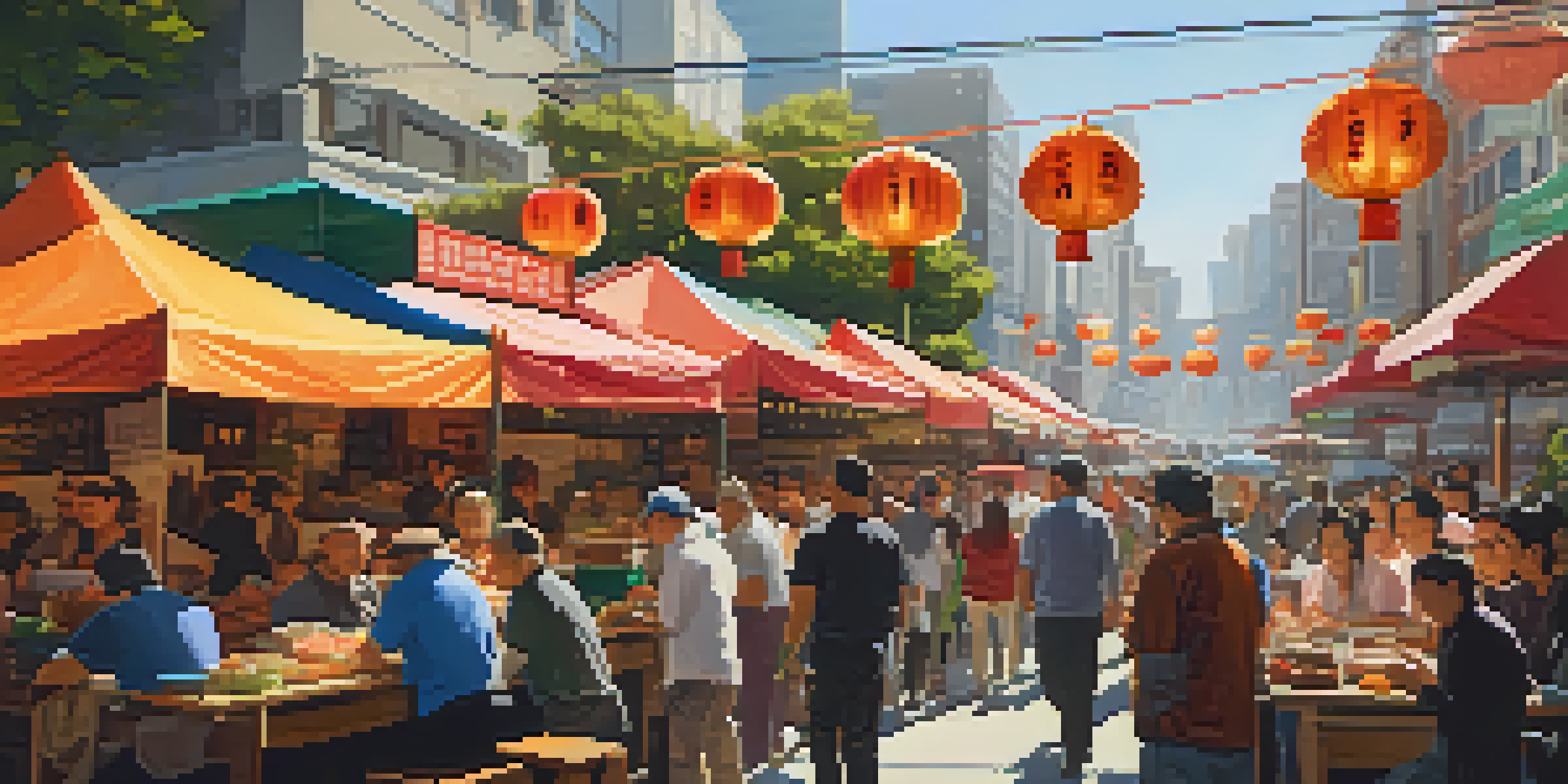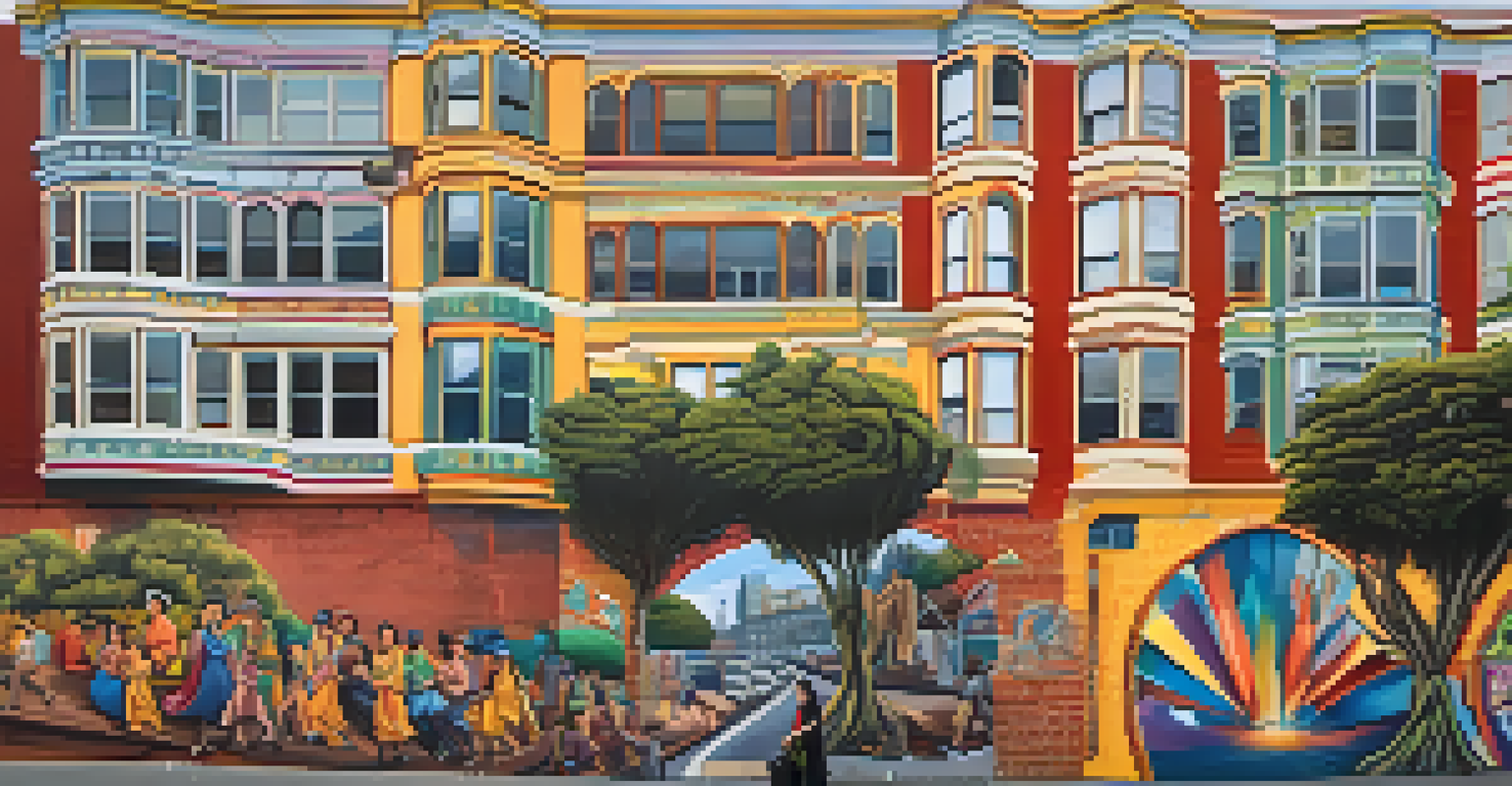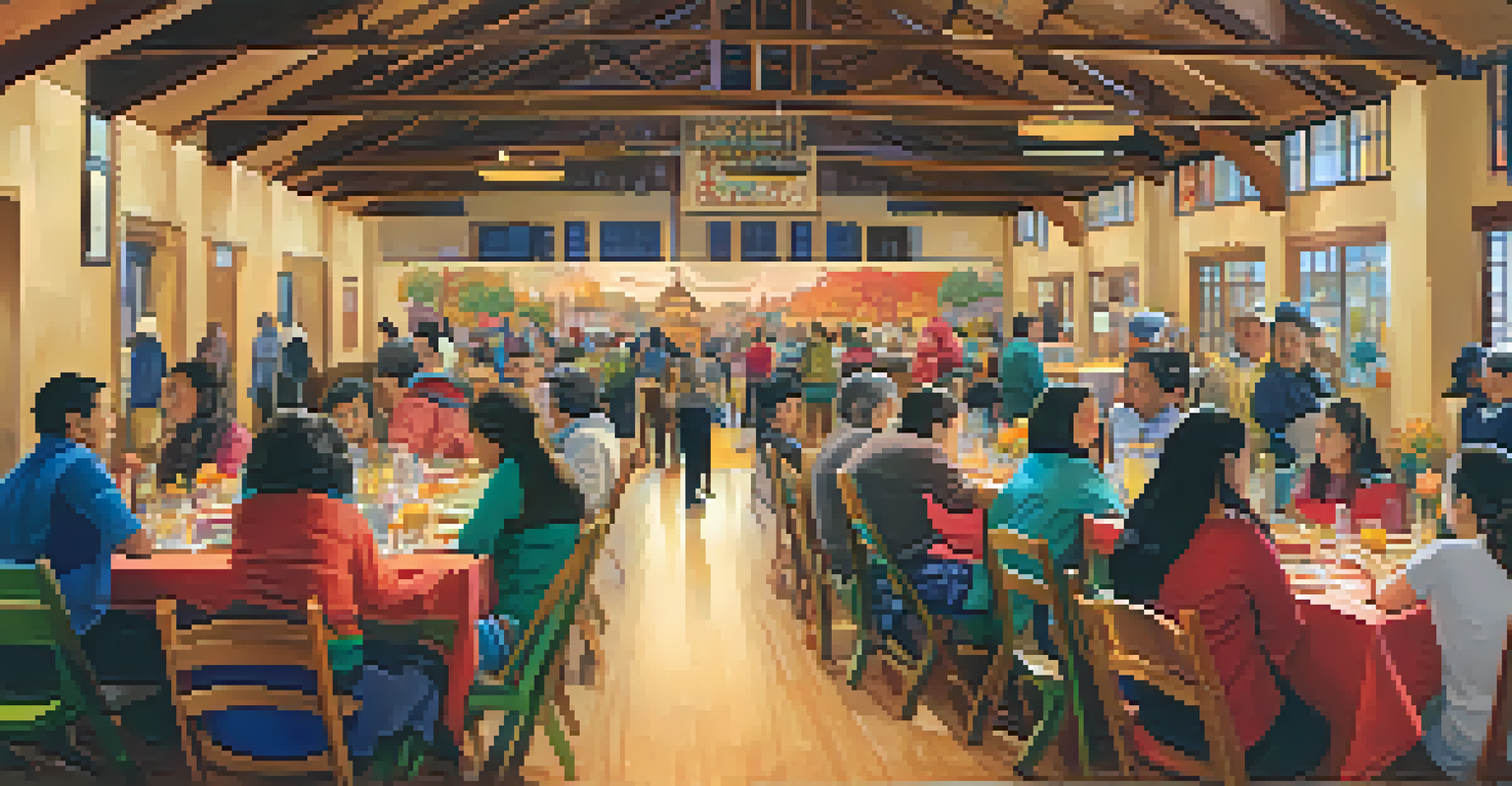The Impact of Immigration on San Francisco's Cultural Landscape

The Historical Context of Immigration in San Francisco
San Francisco has long been a beacon for immigrants seeking new opportunities. Dating back to the Gold Rush in the mid-1800s, people from diverse backgrounds flocked to the city in hopes of striking it rich. This influx not only changed the city’s demographics but also laid the groundwork for a rich tapestry of cultures that still thrives today.
San Francisco is a city of immigrants, and its diverse cultures are the lifeblood of its creativity and innovation.
Throughout the years, waves of immigrants from Asia, Europe, and Latin America have settled in San Francisco. Each group brought their unique traditions, languages, and cuisines, contributing to a melting pot of cultural influences. For example, the arrival of Chinese laborers led to the establishment of Chinatown, which remains one of the oldest and most vibrant such neighborhoods in North America.
Understanding this historical context helps us appreciate the depth of cultural diversity in San Francisco. It’s not just about the numbers; it’s about the stories and traditions that these communities have preserved and continue to share with others.
Culinary Diversity: A Taste of the World
One of the most tangible impacts of immigration in San Francisco is its incredible culinary scene. From authentic dim sum in Chinatown to savory tacos in the Mission District, the city offers a gastronomic journey that reflects its diverse population. Each dish tells a story of tradition, adaptation, and community.

Food festivals and farmers' markets also highlight this diversity, bringing together flavors from around the globe. Events like the San Francisco Street Food Festival celebrate the rich tapestry of cuisines and the immigrant chefs who bring their heritage to the forefront. These gatherings not only tantalize taste buds but also foster connections between cultures.
Cultural Diversity Enriches San Francisco
The city's diverse immigrant communities have woven a rich cultural tapestry that influences its demographics, cuisine, and artistic expressions.
Moreover, the fusion of culinary styles exemplifies how immigrants have influenced local cuisine. For instance, the emergence of Asian-fusion restaurants showcases a blend of flavors that appeals to both locals and tourists, emphasizing the ongoing evolution of San Francisco's food culture.
Artistic Expressions: Celebrating Cultural Heritage
San Francisco's cultural landscape is also enriched by the artistic expressions of its immigrant communities. From traditional dances to contemporary art exhibits, these communities showcase their heritage through various forms of creative outlets. Local galleries often feature artists who draw inspiration from their backgrounds, highlighting the city’s vibrant art scene.
The beauty of San Francisco is that it is a melting pot of cultures, where every individual contributes to the vibrant tapestry of our community.
Public art installations and performances, such as those found in the Mission District, serve as a canvas for storytelling and cultural expression. Murals depicting historical events and personal narratives celebrate the contributions of immigrants while also inviting dialogue among diverse audiences. This artistic dialogue fosters a sense of unity and understanding.
Furthermore, events like the San Francisco International Arts Festival provide a platform for multicultural performances, drawing attention to the rich array of talents within immigrant communities. These celebrations not only entertain but also educate audiences about the significance of cultural heritage.
Language: A Tapestry of Tongues
Language is a powerful indicator of cultural diversity, and San Francisco is no exception. With over 120 languages spoken, the city is a vibrant mosaic of dialects and accents. Walking through neighborhoods, one can hear everything from Spanish to Tagalog, a testament to the city’s immigrant roots.
This linguistic diversity enriches everyday interactions and enhances the cultural fabric of the city. For instance, bilingual signage in neighborhoods like the Mission District reflects the community’s heritage while also serving as a welcoming gesture to newcomers. It’s a small yet significant way to honor the languages that shape the city’s identity.
Challenges for Immigrant Communities
Despite their contributions, immigrant communities face significant challenges, including housing affordability and access to healthcare.
Moreover, language learning programs and cultural exchanges promote understanding and appreciation among residents. These initiatives not only help bridge communication gaps but also foster friendships across cultures, creating a more inclusive atmosphere for everyone.
Community: Building Bridges Through Connection
Immigrant communities in San Francisco often band together to create support networks that foster a sense of belonging. These communities are vital in helping new arrivals navigate their new environment, from finding housing to securing jobs. This communal support not only aids individuals but also strengthens the overall fabric of the city.
Cultural organizations and community centers play a crucial role in this process. They host events, provide resources, and celebrate cultural festivals that invite everyone to participate. For example, the San Francisco Unified School District often collaborates with immigrant families to ensure that children retain their cultural identity while also integrating into American society.
These connections extend beyond cultural boundaries, creating a sense of solidarity among different groups. By fostering friendships and collaborations, San Francisco’s immigrant communities exemplify how diversity can lead to unity, enriching the lives of all residents.
Challenges Faced by Immigrant Communities
Despite the vibrant cultural contributions, immigrant communities in San Francisco face significant challenges. Issues like housing affordability, language barriers, and access to healthcare can hinder their ability to thrive. These obstacles not only affect individuals but also impact the overall community, making it essential for local authorities to address these concerns.
Moreover, the rise of anti-immigrant sentiments can create an atmosphere of fear and exclusion. Many immigrants live in the shadows, uncertain about their future and reluctant to access resources or services. This situation highlights the need for advocacy and support systems that empower these communities and ensure their voices are heard.
Future of Diversity in San Francisco
As new generations of immigrants arrive, they will continue to shape and preserve the city's dynamic cultural landscape.
Efforts from non-profit organizations and community leaders are crucial in addressing these challenges. By focusing on education, outreach, and policy advocacy, they strive to create a more equitable environment where all residents can flourish, regardless of their background.
The Future: Continuing the Legacy of Diversity
Looking ahead, the impact of immigration on San Francisco's cultural landscape is poised to evolve. As new generations of immigrants arrive, they will undoubtedly bring fresh perspectives and ideas that will continue to shape the city. This ongoing exchange of cultures promises to keep San Francisco dynamic and innovative.
Moreover, the resilience of immigrant communities ensures that their rich traditions will be preserved and celebrated. Events like the Lunar New Year Parade and Día de los Muertos not only honor heritage but also educate future generations about the importance of cultural diversity.

Ultimately, the future of San Francisco's cultural landscape hinges on embracing this diversity. By fostering an inclusive environment that values every voice, the city can continue to thrive as a global hub of creativity, connection, and community.